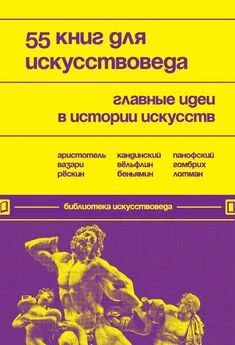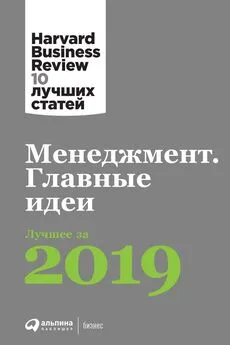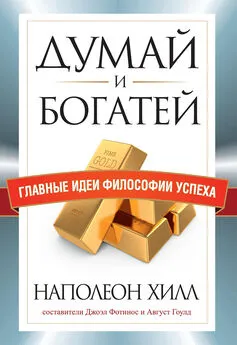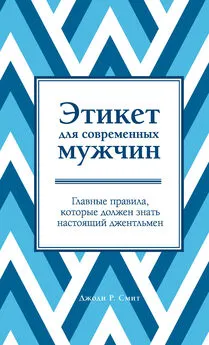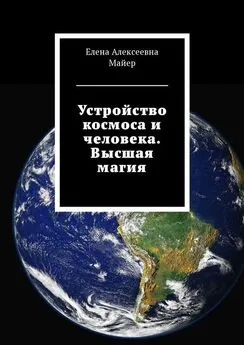Приямвада Натараджан - Карта Вселенной [Главные идеи, которые объясняют устройство космоса]
- Название:Карта Вселенной [Главные идеи, которые объясняют устройство космоса]
- Автор:
- Жанр:
- Издательство:Альпина нон-фикшн
- Год:2019
- Город:Москва
- ISBN:978-5-0013-9026-8
- Рейтинг:
- Избранное:Добавить в избранное
-
Отзывы:
-
Ваша оценка:
Приямвада Натараджан - Карта Вселенной [Главные идеи, которые объясняют устройство космоса] краткое содержание
Астрофизик Приямвада Натараджан находится на переднем крае исследований, она в буквальном смысле создает карты Вселенной — схемы распределения темной материи. В своей книге Натараджан рассказывает об открытиях, изменивших наши представления о Вселенной в прошедшем веке, о науке, стоящей за ними, и о пути признания радикальных научных теорий; размышляет о том, почему новые идеи о Вселенной и нашем месте в ней часто встречают в штыки даже в научном сообществе. Ведь наука, всегда меняющаяся и неполная, какой она и должна быть, — это лучший способ понять нашу чудесную, таинственную Вселенную.
Карта Вселенной [Главные идеи, которые объясняют устройство космоса] - читать онлайн бесплатно ознакомительный отрывок
Интервал:
Закладка:
3. Bartusiak, Day We Found the Universe, 174; and Christianson, Edwin Hubble, 86–87.
4. Aristotle, On the Heavens, book 1, chapter 3, translated by W. K. C. Guthrie, Loeb Classical Library (Cambridge, MA: Harvard University Press, 1971), 25. Неподвижные звезды имеют параллакс, который представляет собой изменение видимого положения, вызванное орбитальным движением Земли. Этот эффект достаточно мал, и его не могли заметить до наших дней. С его помощью можно найти расстояние до ближайших звезд.
5. Liber Hermetis, Part I, translated by Robert Zoller, edited by Robert Hand (Berkeley Springs, WV: Golden Hind, 1993).
6. Шекспир У. Полное собрание сочинений. Т. 8. — М.: Искусство, 1960.
7. Percy Bysshe Shelley, Queen Mab; a Philosophical Poem (New York: William Baldwin, 1821), 46.
8. Robert Mitchell, «‘Here Is Thy Fitting Temple’: Science, Technology and Fiction in Shelley’s Queen Mab», in «Romanticism on the Net», special issue, Romanticism and Science Fiction 21 (February 2001): www.erudit.org/revue/ron/2001/v/n21/ 005964ar.html
9. Эйнштейн А. Собрание научных трудов в четырех томах. — М.: Наука, 1965–1967.
10. Позже Эйнштейн утверждал, что космологическая константа была его «самой большой ошибкой». См.: Mario Livio, Brilliant Blunders: From Darwin to Einstein — Colossal Mistakes by Great Scientists That Changed Our Understanding of Life and the Universe (New York: Simon and Schuster, 2013), 233.
11. Lightman, Discoveries, 230–32.
12. Georges Lemaître, «Un univers homogène de masse constante et de rayon croissant rendant compte de la vitesse radiale des nébuleuses extragalactiques», Annales de la Société scientifique de Bruxelles 47A (1927): 49–59, translated as «A Homogeneous Universe of Constant Mass and Increasing Radius Accounting for the Radial Velocity of Extra-galactic Nebulae», Monthly Notices of the Astronomical Society 91 (1931): 483–90, quote on 489.
13. Charles Darwin to W. D. Fox, February 15, 1851, available at Darwin Correspondence Project, accessed August 12, 2014, www.darwinproject.ac.uk/entry-94
14. Immanuel Kant, Allgemeine Naturgeschichte und Theorie des Himmels (Königsberg: Petersen, 1755), part 1, translated by Hubble himself in his Realm of the Nebulae (New Haven: Yale University Press, 1982), 23–25.
15. Hubble, Realm of the Nebulae, 23.
16. Barbara L. Welther, «Pickering’s Harem», Isis 73 (1982): 94.
17. Lightman, Discoveries, 111–26; and Henrietta Leavitt, «Periods of 25 Variable Stars in the Small Magellanic Cloud», article signed by Edward C. Pickering, Harvard College Observatory Circular 173 (March 3, 1912): 3.
18. Harlow Shapley, «Globular Clusters and the Structure of the Galactic System», Publications of the Astronomical Society of the Pacific 30, no. 173 (1918): 42–54.
19. Robert W. Smith, «Edwin P. Hubble and the Transformation of Cosmology», Physics Today, April 1990, 52–58.
20. Bartusiak, Day We Found the Universe, 169–250; and Lightman, Discoveries, 236–40. Hubble’s account of his research work is in his Realm of the Nebulae .
21. Световой год — это расстояние, которое проходит свет за год со скоростью примерно 300 000 км/с, приблизительно соответствует расстоянию в 9,7 трлн км.
22. Hubble, Realm of the Nebulae, 23.
23. Smith, «Edwin P. Hubble», 57.
24. George W. Gray, «Invisible Stuff», Atlantic Monthly, July 1931, 47–56.
25. James Stokley, «Eddington Pictures Expanding Universe», New York Times, September 7, 1932, available at http://timesmachine.nytimes.com/times machine/1932/09/08/100802822.html
26. Edwin Hubble, «Effects of Red Shifts on the Distribution of Nebulae», Astrophysical Journal 84 (1936): 517–54, quote on 517.
27. Cormac O’Raifeartaigh, Brendan McCann, Werner Nahm, and Simon Mitton, «Einstein’s Steady State Theory: An Abandoned Model of the Cosmos», accepted for publication in European Physics Journal H, last revised May 22, 2014, http://arxiv.org/abs/1402.0132
28. Fred Hoyle, BBC radio broadcast, March 28, 1949, reprinted in Listener 41 (April 7, 1949): 568. See www.joh.cam.ac.uk/library/special_ collections/hoyle/exhibition/radio
29. Fred Hoyle, «Steady State Cosmology Revisited», in Cosmology and Astrophysics: Essays in Honor of Thomas Gold, ed. Yervant Terzian and Elizabeth M. Bilson (Ithaca: Cornell University Press, 1982), 51.
30. Helge Kragh, Cosmology and Controversy: The Historical Development of Two Theories of the Universe (Princeton: Princeton University Press, 1996).
1. Rumiko Takahashi, Inuyasha, originally serialized in Weekly Shōnen Sunday from 1996 to 2008. Miroku also appears in season 1, episode 16 of the Inuyasha anime, which first aired on February 19, 2001. See also Rupert W. Anderson, The Cosmic Compendium: Black Holes (self-published through Lulu.com, 2015), 57.
2. Stanley Wolpert, A New History of India, 8th ed. (New York: Oxford University Press, 2009), 185; J. H. Little, «The Black Hole — the Question of Holwell’s Veracity», in Bengal, Past and Present: Journal of the Calcutta Historical Society 12 (1916), part 1, serial 23: 32–42, 136–71; and «Only One Topic in Paris», New York Times, May 29, 1887, accessed September 15, 2015, http://query.nytimes.com/mem/archive-free/pdf?res=9C04E0DB1730E633A257 5AC2A9639C94669FD7CF.
3. Edgar A. Poe, «The Premature Burial», Philadelphia Dollar Newspaper, July 31, 1844, available at www.eapoe.org/works/info/pt048.htm#text02
4. Бартусяк в деталях исследовал этот вопрос в: Black Hole: How an Idea Abandoned by Newtonians, Hated by Einstein, and Gambled On by HawkingBecame Loved (New Haven: Yale University Press, 2015), глава 7.
5. Michael Sanderson, Education, Economic Change and Society in England 1780–1870 (Cambridge: Cambridge University Press, 1995), 40.
6. «Case Study: John Michell and Black Holes», excerpt from Cosmic Horizons: Astronomy at the Cutting Edge, ed. Steven Soter and Neil deGrasse Tyson (New York: New Press, 2000), на сайте Американского музея национальной истории: www.amnh.org/education/resources/rfl/ web/essaybooks/cosmic/cs_michell.html
7. John Michell, «On the Means of Discovering the Distance, Magnitude, andc. of the Fixed Stars, in Consequence of the Diminution of the Velocity of Their Light, in Case Such a Diminution Should Be Found to Take Place in Any of Them, and Such Other Data Should Be Procured from Observations, as Would Be Farther Necessary for That Purpose. By the Rev. John Michell, B. D. F. R. S. In a Letter to Henry Cavendish, Esq. F. R. S. and A. S»., Philosophical Transactions of the Royal Society of London 74 (1784): 35–57; and Charles Coulston Gillispie, Pierre-Simon Laplace, 1749–1827: A Life in Exact Science, with the collaboration of Robert Fox and Ivor Grattan-Guinness (Princeton: Princeton University Press, 2002), 175.
8. A. Einstein, «Ist die Tragheit eines Korpers von seinem Energieinhalt abhangig?» [Does the inertia of a body depend on its energy content?], Annalen der Physik, 4th ser., vol. 18 (1905): 639–41; and Einstein, «Erklarung der Perihelbewegung des Merkur aus der allgemeinen Relativitatstheorie» [Explanation of the perihelion motion of Mercury from the general theory of relativity], Sitzungsberichte der Königlich Preussischen Akademie der Wissenschaften 2 (November 18, 1915): 831–39.
9. Mitchell Begelman and Martin Rees, Gravity’s Fatal Attraction: Black Holes in the Universe, 2nd ed. (Cambridge: Cambridge University Press, 2005), это полное введение в теорию черных дыр с большим количеством иллюстраций и диаграмм.
10. Einstein, «Tragheit eines Korpers».
11. Michael White and John Gribbin, Einstein: A Life in Science (London: Simon and Schuster, 1993), 115–16; and Frank Watson Dyson, Arthur Stanley Eddington, and Charles Davidson, «A Determination of the Deflection of Light by the Sun’s Gravitational Field, from Observations Made at the Total Eclipse of 29 May 1919», Philosophical Transactions of the Royal Society 220A (1920): 291–333.
12. A. Einstein, Relativity: The Special and General Theory, translated by Robert W. Lawson, introduction by Roger Penrose (New York: Pi, 2005); and Mario Livio, Brilliant Blunders: From Darwin to Einstein — Colossal Mistakes by Great Scientists That Changed Our Understanding of Life and the Universe (New York: Simon and Schuster, 2013), 269. I discuss more generally the provisional nature of science, for instance how new theories displace older ones, in my review essay «What Scientists Really Do», New York Review of Books, October 23, 2014, www.nybooks.com/articles/archives/ 2014/oct/23/what-scientists-really-do/
13. Karl Schwarzschild, «Uber das Gravitationsfeld eines Massenpunktes nach der Einsteinschen Theorie», Sitzungsberichte der Königlich Preussischen Akademie der Wissenschaften 7 (1916): 189–96, translated by Salvatore Antoci and Angelo Loinger as «On the Gravitational Field of a Mass Point According to Einstein’s Theory», submitted May 12, 1999, http://arxiv.org/abs/physics/9905030; and Roy P. Kerr, «Gravitational Field of a Spinning Mass as an Example of Algebraically Special Metrics», Physical Review Letters 11, no. 5 (1963): 237.
14. The conflict between Chandra and Eddington is described in Kameshwar C. Wali, Chandra: A Biography of S. Chandrasekhar (Chicago: University of Chicago Press, 1992), 123–46. Arthur I. Miller’s Empire of the Stars: Obsession, Friendship, and Betrayal in the Quest for Black Holes (Boston: Houghton Mifflin, 2005) is entirely about the controversy surrounding black holes.
15. Miller, Empire of the Stars, 3–15, 96–119, 135.
16. Ibid., 125–50.
17. Max Planck, Scientific Autobiography and Other Papers, translated by F. Gaynor (New York: Philosophical Library, 1949), 33–34.
18. 1 нанометр — 1 миллиардная часть метра, или 10 –9м.
Читать дальшеИнтервал:
Закладка:
![Обложка книги Приямвада Натараджан - Карта Вселенной [Главные идеи, которые объясняют устройство космоса]](/books/1075278/priyamvada-nataradzhan-karta-vselennoj-glavnye-idei.webp)


